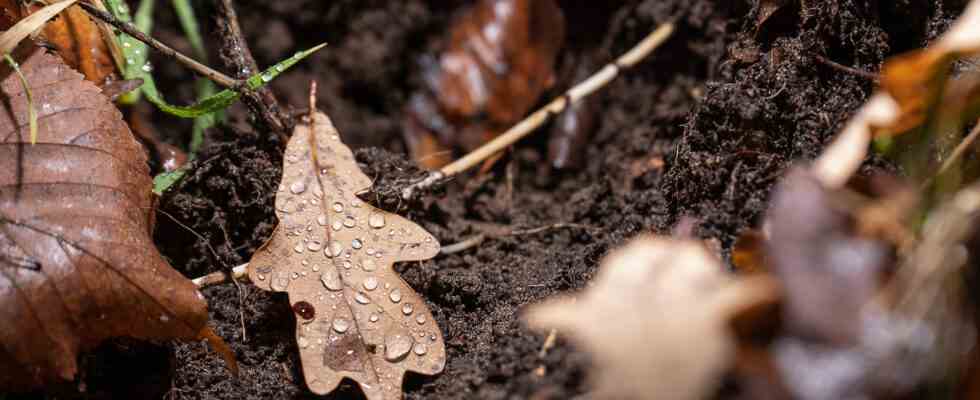Status: 12/16/2022 12:28 p.m
It is well known that trees bind CO2. But the forest floor can also contribute to climate protection: Because it can absorb and even metabolize methane. The key to this is bacteria in the soil.
What influence do forest soils have on the climate? Verena Lang from the Forestry Research and Testing Institute in Baden-Württemberg (FVA-BW) is investigating this question. The environmental scientist and natural scientist regularly goes to the forest and examines how important forest soils are in relation to the climate. Always with him: sturdy shoes and a yellow suitcase, the so-called Greenhouse Gas Analyzer. This allows Lang to measure methane concentrations in the soil air.
Bacteria feed on methane
To do this, the researcher places a small plastic hood with hoses on the forest floor. These are connected to her tablet and then show her the methane content of the soil air. Such measurements take place four times a year. Lang is always fascinated by the forest and its properties.
Forest soils are more than just a source of food, habitat, water filter or nutrient storage. The interesting thing for them: Forest floors would provide a habitat for bacteria that absorb and metabolize methane (CH4) from the atmosphere. To put it simply: the bacteria feed on methane. And that, in turn, is important for the climate.
Second most common greenhouse gas
“Methane has a significantly stronger effect on climate change than carbon dioxide,” says the director the Department of Soil and Environment of the FVA-BW, Heike Puhlmann. After carbon dioxide (CO2), methane is the second most common greenhouse gas caused by humans. According to Puhlmann, the degradation of methane in forest soils actively contributes to reducing the consequences of climate change.
Forests are important for climate protection – both the trees and the soil.
Image: picture alliance/dpa
Methane as a climate indicator
How has methane degradation already changed as a result of climate change? This is what the investigations of the FVA can show: The breakdown of methane depends on soil moisture and temperature – two parameters that are constantly changing as a result of climate change. This can be demonstrated at all 13 test sites of the FVA-BW. For more than 20 years, soil gas profiles have been examined at the various locations in the forest.
The data also show that tree population, season and planting affect methane removal. The values show that more methane is broken down under beech than under spruce. The scientists suspect that this could be due to the fact that spruce contains essential oils that have a negative effect on bacteria and thus on methane degradation. The degradation of methane in deciduous and mixed forests is therefore probably better than in coniferous forests.
Also: “Bacteria are much more active in summer than in winter”. Therefore, according to Lang, methane degradation is better in the warm season. The comparison to other land uses is also interesting. It is assumed that forest soils tend to consume 40-50 percent more methane than other agricultural soils due to their microbiological composition.
state of the forest
“Our forests and their soils are immensely important for the climate,” says Puhlmann, head of the Freiburg research institute FVA. The reason: Not only do they break down methane in the ground, they also bind greenhouse gases such as CO2 in the wood.
In terms of methane reduction, the German forests are still doing well overall. Nevertheless, there is concern that this will not remain the case with increasing climate change. In recent years in particular, the forests have had to contend with severe drought and heat. As a result, a lot of forest died. The aim is therefore to preserve the forests in such a way that they bind a lot of CO2 in the wood and soil in the long term and break down CH4, says Puhlmann.
The SAMS project
The “Soils as methane sinks” (SAMS) project has been running at the FVA-BW since March 2021. It should be completed in 2024 and thus provide more precise insights into greenhouse gas balances for forest soils.

